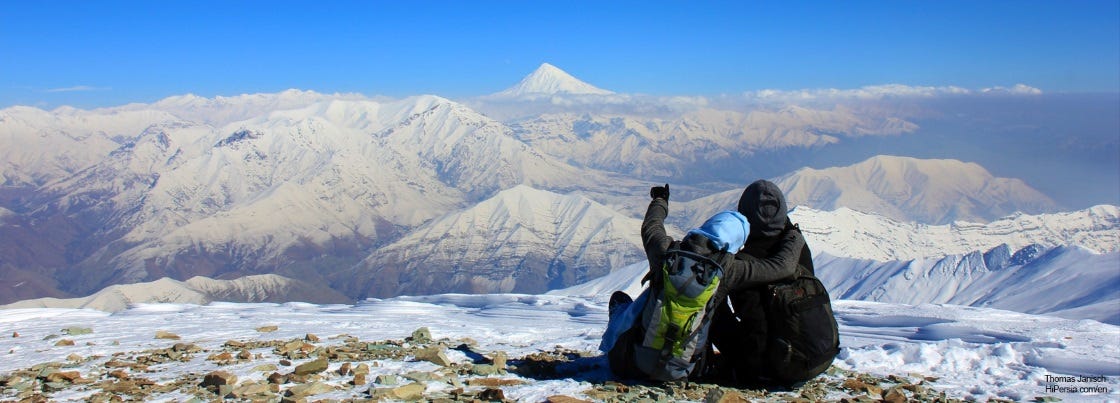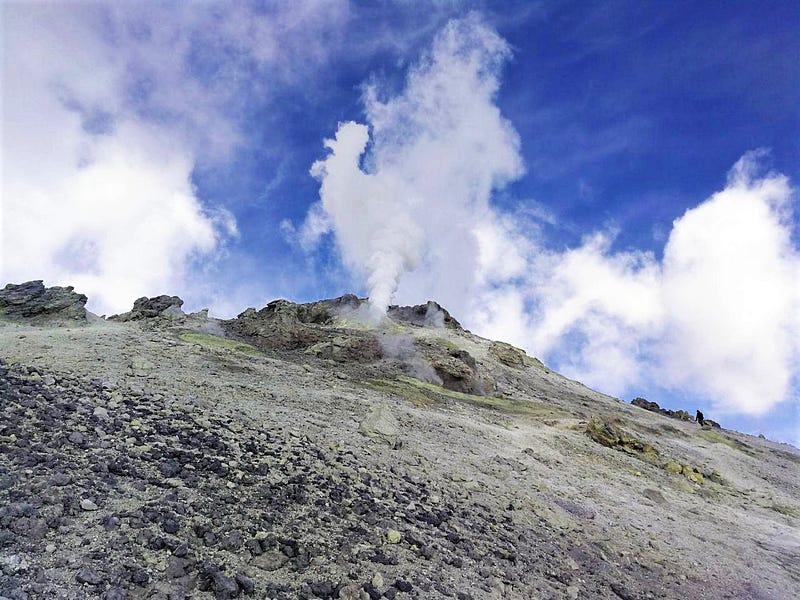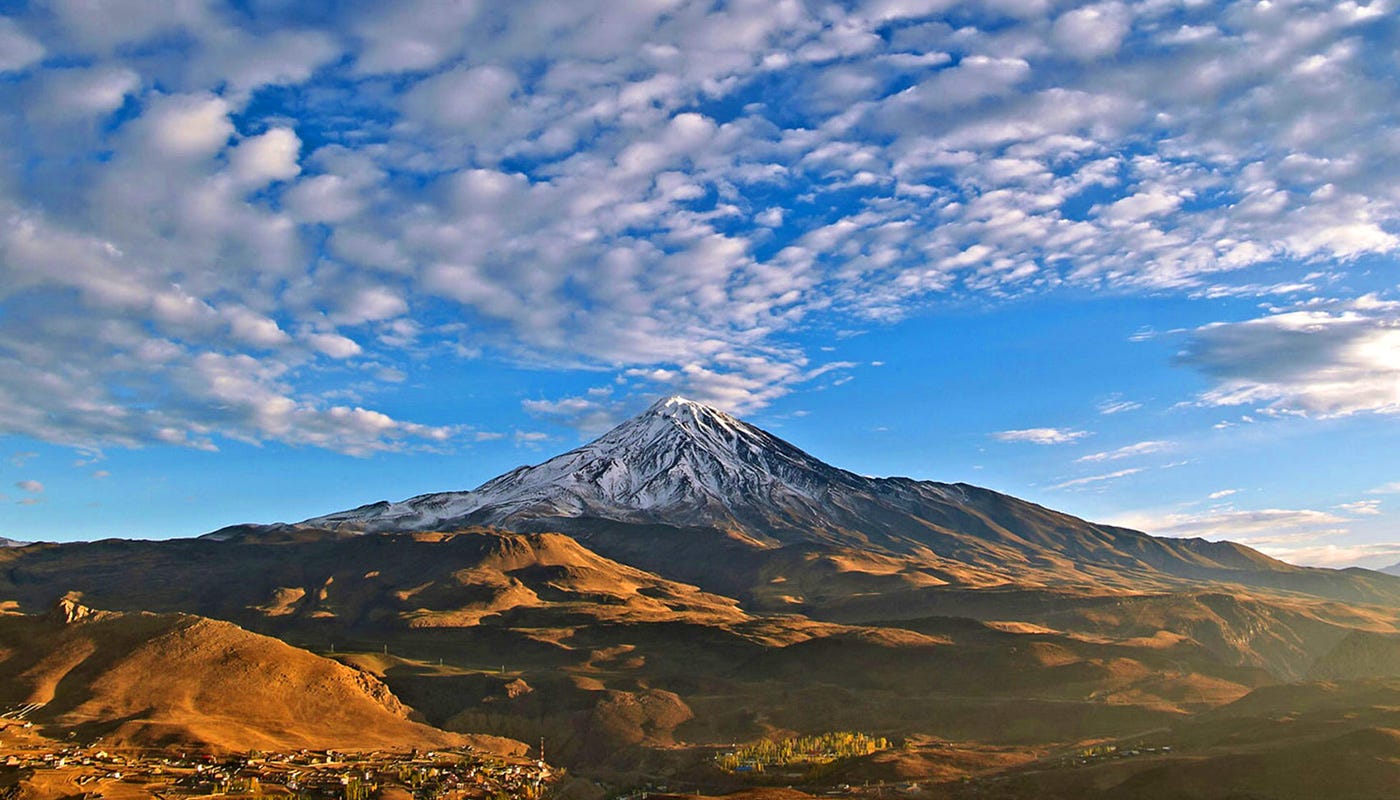MOUNT DAMAVAND AND FIRST ASCENDS
Mount Damavand is a potentially active volcano; and with its perfect cone-shape is located in the central part of Alborz Mountain Range in the north of Iran, on the southern coast of the Caspian Sea. Damavand Volcano is 5671 meters high. It is the highest volcano in Asia, the highest summit in the Middle East and the second highest volcano in the northern hemisphere. The earliest recorded ascent of Damavand was in 905 by Abu Dolaf Kazraji; others may have preceded him. Three centuries after his ascend, Yaqut, the great Byzantine/Arab geographer, attempted to climb Damavand without success. However, the local people who served him as guides gave him a detailed description of the summit Later he incorporated this into his famous “Dictionary of Geography. Apparently, climbs of Damavand were not uncommon during the early 13th century, before the Mongol invasion under Hulagu Khan swept, and destroyed, everything before it. At the time of Thompson’s ascent in 1837, ascents regularly were being made by locals, to gather Sulfur from the summit for commercial purposes; Thompson himself mentions this in his article in the Royal Geographic society magazine of 1838.
SYMBOLISM AND MYTHOLOGY
Damavand is a notable and inseparable part of the Persian and Iranian mythology. It is the symbol of Iranian resistance against intruders and invasions and inspiring force to topple foreign rule in Persian poetry and literature. In Zoroastrian texts and mythology, the three-headed dragon Aži Dahāka was chained within Mount Damāvand, there to remain until the end of the world. In a later version of the same legend, the tyrant Zahhāk was also chained in a cave somewhere in Mount Damāvand after being defeated by Kāveh and Fereydūn. The mountain is said to hold magical powers in the Shahnameh (Book of Kings, a book by Ferdowsi the great Iranian Poet). Damāvand has also been named in the Iranian legend of Arash the archer (as recounted by Bal’ami) as the location from which the hero shot his magical arrow to mark the border of Iran, during the border dispute between Iran and Turan. Some of the camps of the Damavand refers to these myths, one of the camps in the northeast route is called — Takht –e Fereydun — Fereydun’s Throne; there is also a camp named Simorgh on the west ridge, which refers to a mythical bird who was resurrected from the ashes of 30 different birds ( Si~ is thirty and ~Morgh is Bird) Mount Damavand is depicted on the reverse of the Iranian 10,000 Rials banknote. The origins and meaning of the word “Damavand” are unclear, yet some prominent researchers have speculated that it probably means, “The Mountain from which smoke and ash arises”, alluding to the volcanic nature of the mountain. (Dam~A~Vand is Cloud (Ash)~Breath~Mountain).
DAMAVAND GEOGRAPHICAL POSITION AND VIEW
The highest peak of Middle East is in the middle of the Central Alborz range, adjacent to Varārū, Sesang, Gol-e Zard, and Mīānrūd. It is near the southern coast of the Caspian Sea, in Amol County, Mazandaran Province, 66 kilometers (41 miles) northeast of the city of Tehran. Mount Damāvand is the 12th most prominent peak in the world, and the second most prominent in Asia after Mount Everest. It is the highest volcanic mountain in Asia, and part of the Volcanic Seven Summits mountaineering challenge and its Parent Peak is Mount Elbrus. The fact that there is no mountain above 5000 meters in Europe and the combination of its beautiful perfect corn shape, being relatively easy to ascend and being 5671 meters, has made it very popular especially for Europeans who want to try an upper 5500-meter summit. Snow covers the entire mountain in winter and the upper parts in the other seasons. It has a narrow summit crater usually covered with snow cap and cloud. The snowy white peak with its regular Lenticular Cap Cloud is the most beautiful sight of Iran. Many beautiful peaks, of the Central Alborz Chain, surround Damavand. The view of this huge mountain looks more attractive from away than close up. On a clear day, it is visible far from 250 km.
Source: www.alibabatrek.com



Comments
Post a Comment